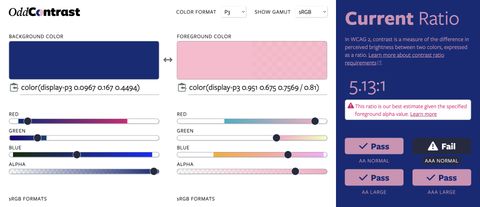Many Django apps need some kind of out-of-band processing. Perhaps you
have to make calls to a separate API server, and don’t want to nest the
latency of HTTP calls. Or perhaps you need to perform a slow and complex
post-processing step on user-submitted data. Whatever it is, you can’t
just put everything in your web processes. Some things demand worker
processes consuming tasks from a queue.
Typically we use Celery for this, though increasingly Django
Channels is emerging as a viable option. In either case, there are
issues that arise from the use of a task queue broker; because of the
indirection that the broker (be it an AMQP server or Redis or
whatever) introduces, you can’t share memory. Without sharing memory,
you can’t share in-memory objects. So, you somehow have to get data
between the web requests and the worker processes.
If it’s just primitive data, that’s fine, you can serialize it. But what
if it’s not? What if you have a Django model that you want to pass to a
task? This is hardly an uncommon need, but there are a few ways to
approach the problem.
First, of course, you can use the pickle Celery task serializer. This
isn’t terrible, but pickle does open you up to some security concerns.
You can mitigate them, but unless you feel confident that you know what
you’re doing, it’s best to avoid exposing yourself to them in the first
place. In the same way that you can sanitize all your database inputs
and assemble DB queries through string concatenation – but would be
well-advised to use prepared statements – you can ensure that
everything that touches pickle is adequately sanitized. I, for one,
prefer to avoid using it, and save myself the worry.
To ensure we don’t risk executing arbitrary code, we can tell Celery to
use the JSON serializer:
CELERY_TASK_SERIALIZER = 'json'
But now we can’t pass full Python objects around, only primitive data.
If we try to pass something that can’t be JSON-serialized, we’ll get a
runtime error.
(This has another use, incidentally: it frees us to make our worker and
web processes in different languages. That’s beyond what I’ll talk about
here, but it’s worth thinking about!)
Getting a Django Model Between Processes
But, we want to pass our models around! How can we do this?
The usual approach is to define tasks to take the model ID as a
parameter, and just pass that. If I need a Foo, I’ll have a parameter
foo_id that I pass to the task. Then in the task, I’ll access the DB
and pull that Foo instance out.
That’s fine. It doesn’t quite cover all situations, though.
What If I Don’t Know What Model I’m Passing?
This is a case I’ve run into. I had a task that had to be run on three
different models (specifically, Question, Answer, and Comment)
that all had a body attribute. I could duck-type my way around this
under most circumstances, but when it came to passing them through the
task-broker barrier, I had to have some way to know just what type of
model I was working with.
There are three obvious approaches:
The first, which is also the worst, is to have a version of the task for
each type. You might call this “the poor man’s parametric polymorphism,”
but it isn’t really polymorphism at all, and it tends to lead to code
duplication. Don’t do this.
(Yes, you can avoid much of the code duplication by well-decomposed
tasks and functions, and making a series of shims that make assumptions
about the types of the arguments. Still don’t do this.)
Alternatively, you could add three (or however many) different arguments
to the task:
@task()
def some_task(foo_id=None, bar_id=None, baz_id=None):
if foo_id is not None:
obj = Foo.objects.get(pk=id)
elif bar_id is not None:
obj = Bar.objects.get(pk=id)
elif baz_id is not None:
obj = Baz.objects.get(pk=id)
else:
return
This is tolerable, but it adds a lot of boilerplate. You get a
function signature that increases in length as the number of possible
types increases, and you get a long if/elif/else chain that
increases at the same rate. Neither of these have much to do with your
task’s logic, but they take up a lot of brainshare.
Also, with both this approach and the previous approach, you have to
know at the call site what sort of ID you’re passing in. This is a mixed
blessing. It makes the code very legible, but it does impede managing
things programmatically.
The third option – my favorite – is to simply tell the task what model
you need:
from django.apps import apps
@task()
def some_task(model_name, model_id):
Model = apps.get_model('django_app_name.{}'.format(model_name))
obj = Model.objects.get(pk=model_id)
Note the crucial piece here: django.apps.apps.get_model. It takes a
model identifier, which is django_app_name.ModelName. The
django_app_name is the last dot-separated part of whatever you put in
INSTALLED_APPS. The ModelName is the name of the class in the
models module in that app.
For added delight here, you can even get the model name automatically in
a mixin to your models:
class SomeMixin:
def save(self, *args, **kwargs):
ret = super().save(*args, **kwargs)
some_task.apply_async((
self.__class__.__name__,
self.pk,
))
return ret
As a final word to the wise, it’s worth noting that this entire
database-mediated approach opens you up to certain timing risks. Data
can skew, and you expose yourself to potential race conditions.
Sometimes that’s not an issue, and sometimes it’s just an acceptable
cost. But in any case, it’s worth keeping in mind.
What If I Need Something That’s Not a Model?
Perhaps you have business-logic class instances which are never stored
in the database. If you can’t, won’t, or don’t want to use the DB as
a persistent store for your data – which you then inflate into a full
object – there are other ways to pass objects through the task-broker
bottleneck.
They all boil down to separating the primitive data from the methods and
logic. Think of it like passing the record or struct through, not
the whole class.
So if that’s the goal, you could make custom JSON encoders and decoders
that know how to traverse your classes. But that’s a pain. Let’s see if
we can write as little code not related to our actual business logic as
possible.
One approach I like is to use the attrs library. It lets you define
your business logic class like so:
import attr
@attr.s
class SomeClass(object):
foo = attr.ib()
bar = attr.ib()
def some_method(self):
pass
And then you can easily serialize an instance:
import attr
inst = SomeClass(foo={'hi': 'there'}, bar=SomeClass(foo=1, bar=False))
attr.asdict(inst)
And just as importantly, you can pass that serialized data to the task,
and inflate it:
def some_task(some_class):
inst = SomeClass(**some_class)
How have you handled object serialization in your projects? We’d love to hear
your thoughts on Twitter, or through our handy contact form. Happy coding,
and serialize safely!
Header image courtesy of Dan Morelle.
Edited to add, on 2018-07-09:
Astute reader Julian Coy writes that there’s another approach: you can
use Django’s built-in serialization/deserialization framework.
This is particularly useful for smaller models, without lots of deep or
crucial relationships. It looks something like this:
from django.core.serializers import serialize, deserialize
json_version = serialize('json', [some_class_instance])
deserialized_objects = deserialize('json', json_version)



